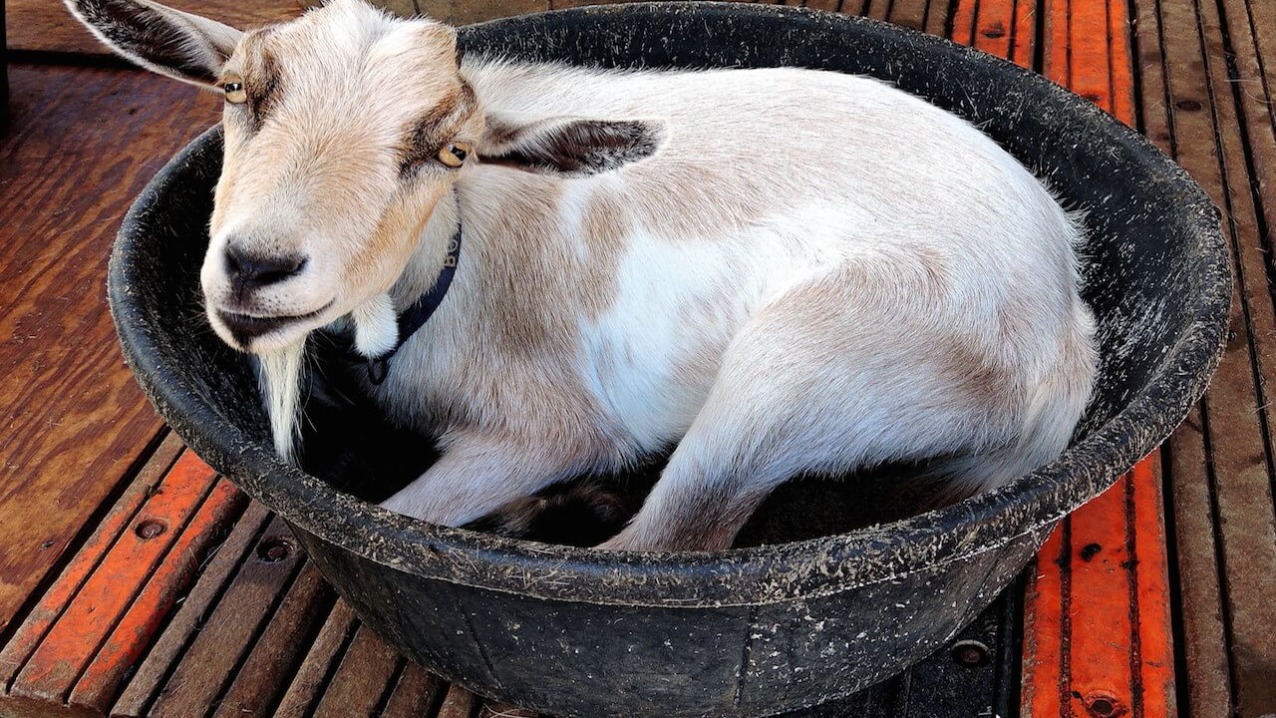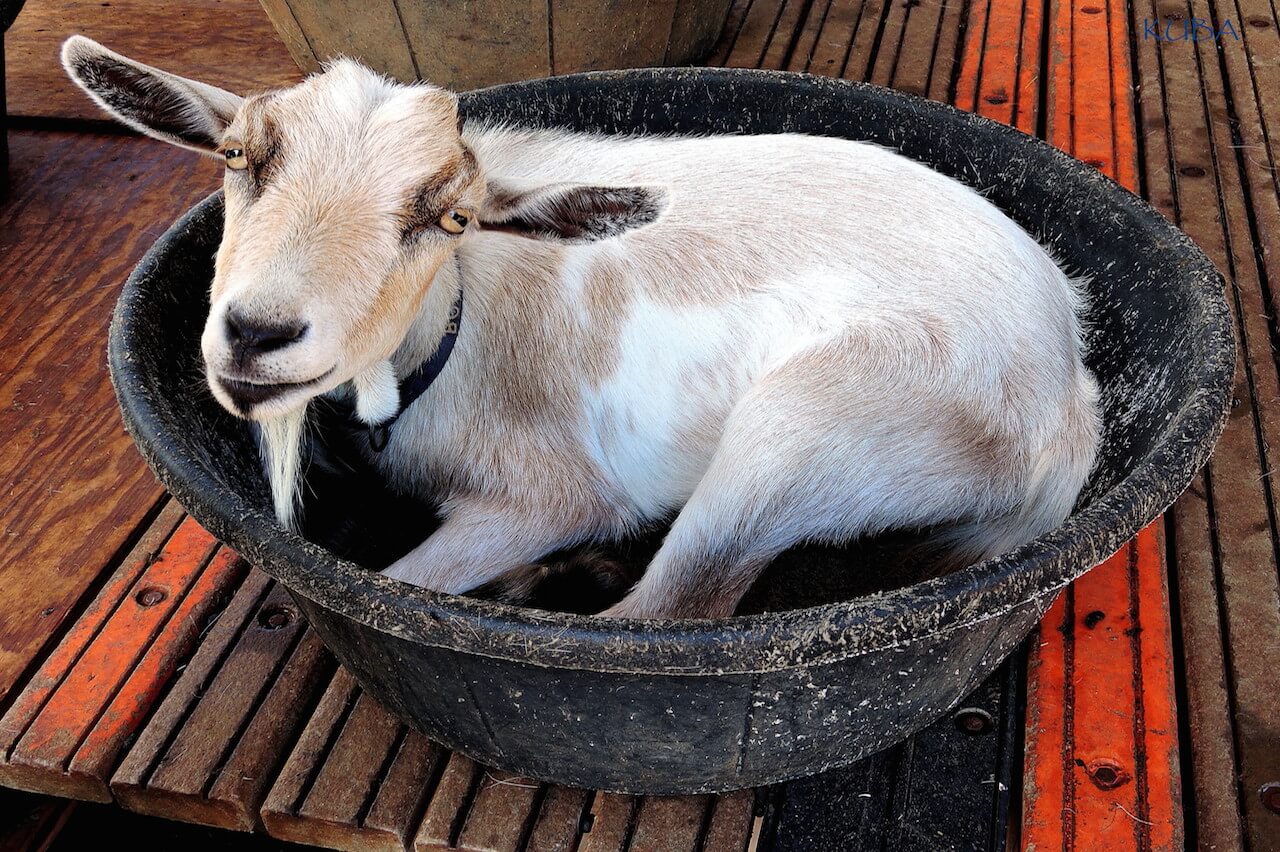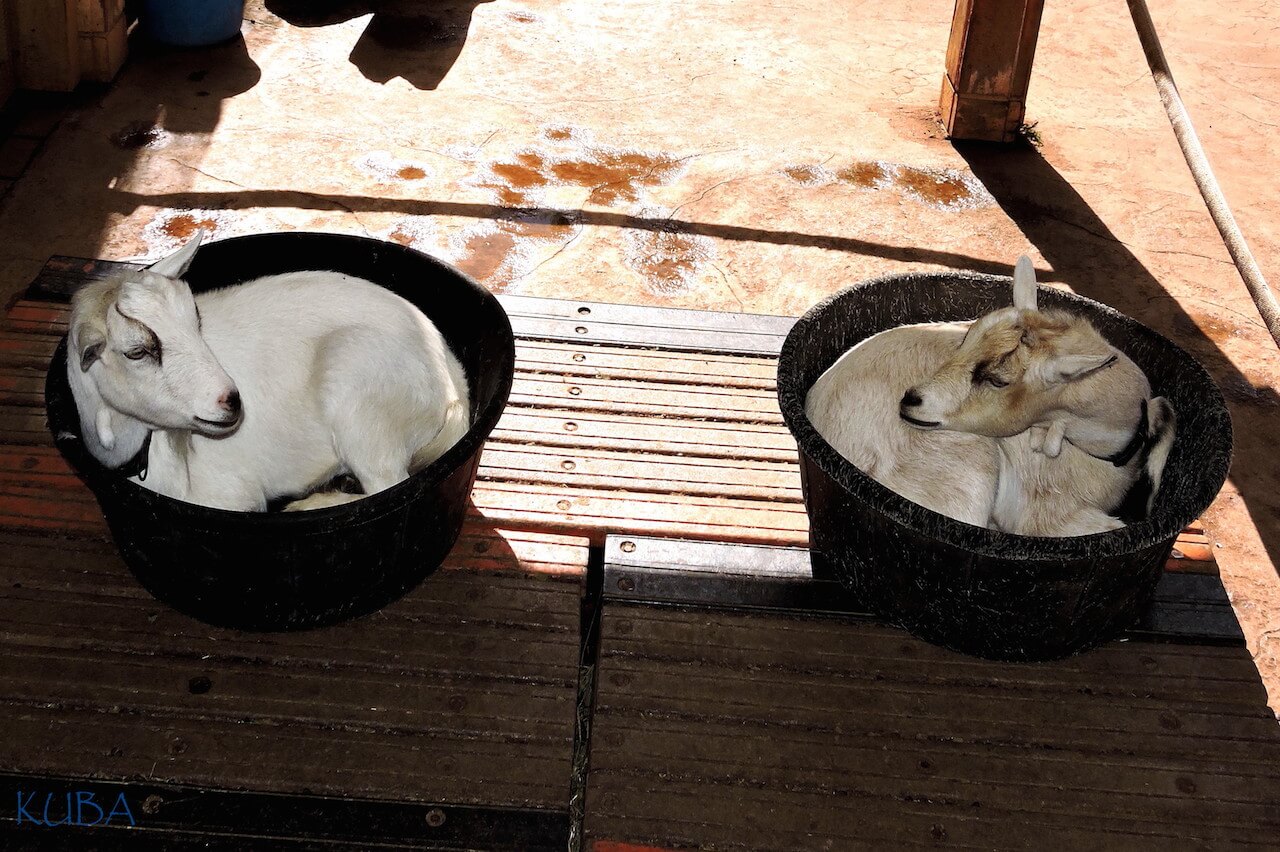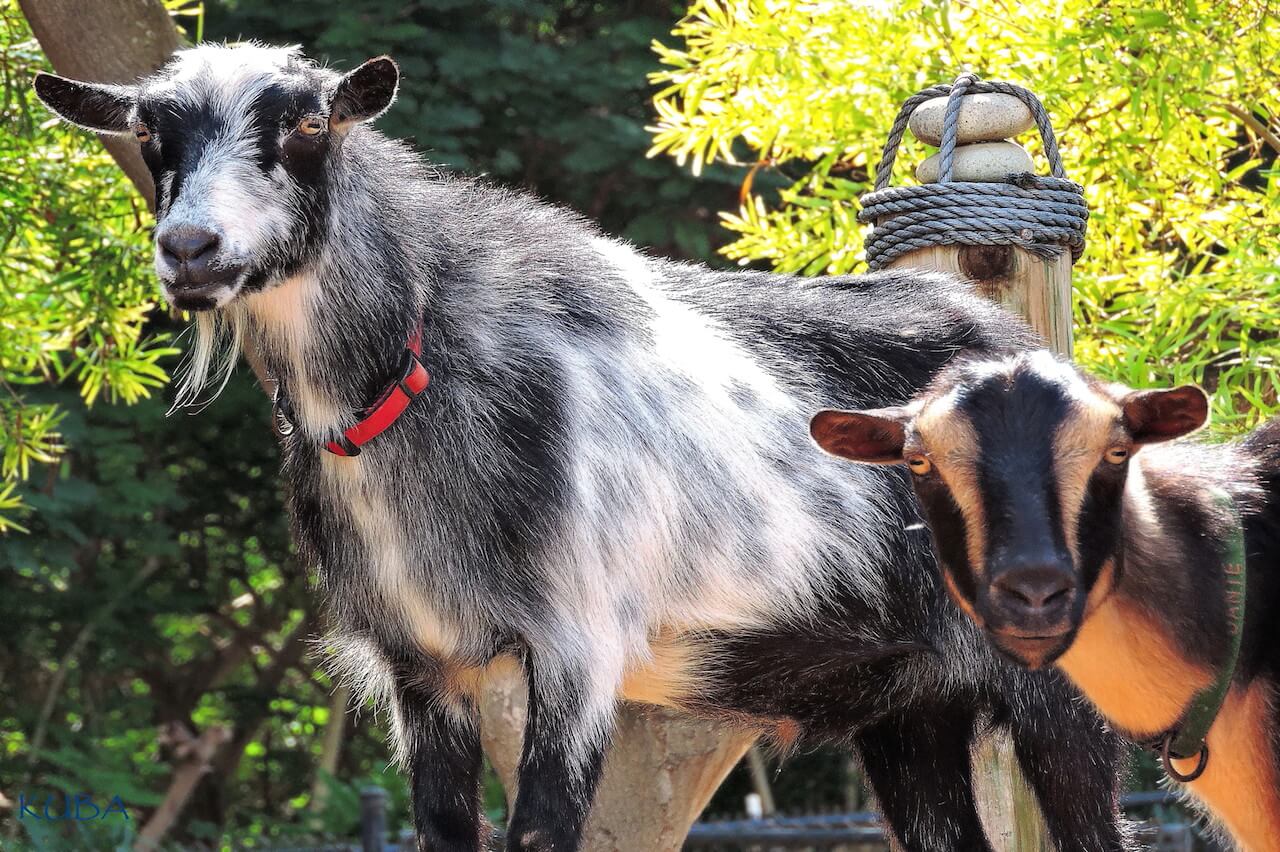capra hircus
Goat
About Me
Scientific Name: Capra hircus
Description
Nubian goats are bred from Indian, African, and British goats, and known for being large animals with long drooping ears and a Roman nose. African pygmy goats are originally from Africa as the name implies. Closely related to sheep, all goats are lively, swift climbing animals.
Fun Facts
- Goats are among the earliest animals domesticated by humans.
- A study by Queen Mary University reports that goats try to communicate with people in the same manner as domesticated animals such as dogs and horses.
- Kingdom: Animalia
- Phylum: Chordata
- Class: Mammalia
- Order: Artiodactyla
Goats were domesticated earlier than cattle, the family to which they belong, and the history of their use by man goes back about 3,000 years. Today, domestic goats are found throughout the world, and are probably descended from wild Persian goats of southwestern Asia.
Closely related to sheep, all goats are lively, swift climbing animals. They are distinguished from sheep by their narrower head and by horns that grow close together at the base, then sweep up and back like a corkscrew with transverse ridges. They have a short, upturned tail. Most domestic goats weigh 100-200 pounds when grown.
Male (and in some breeds, female) goats have a beard and both sexes have appendages or tassels on the throat. Billies have an unpleasant odor during the breeding season.
Goats’ hooves are cloven (divided in two), and the horny tissue grows continuously and needs regular trimming. Goats browsing on rocky terrain or kept on concrete will not require much attention, but those stall-fed or in paddocks will probably need their hooves trimmed every one or two months. The purpose of hoof trimming is to enable the goat to walk easily and to prevent it from becoming lame.
Nubian goats are bred from Indian, African, and British goats, and known for being large animals with long drooping ears and a Roman nose. African pygmy goats are originally from Africa as the name implies.
Goats are active, inquisitive animals. Unfortunately, they have the habit of eating almost anything and many have died from consuming plastic bags and similar indigestible items. Goats are naturally gregarious, and do well when there are two or more. A goat by itself will often show signs of disturbance and become noisy and unmanageable.
The goat is naturally a browsing animal. Its prefers to eat bushes, trees and herbs. Goats will graze very happily, but if hedges are accessible they will make straight for these before eating grass. It often comes as a shock to new goatkeepers that their animals regard hedges as a meal rather than a boundary. Goats are also known for stripping bark, so they should never be allowed within reach of valuable trees.
Like the cow, the goat belongs to the cattle family and eats grass. It has a special stomach so it can swallow its food quickly, then chew it later as a “cud.”
The peak mating season is April and May. This usually results in twins being born around August or September, which coincides with the beginning of the rainy season (captive animals often lose “sexual seasonality” and produce more than one litter per year).
Male goats are capable of siring young at the age of six months. The gestation period is 148-150 days. Female kids can be mated in the year of their birth. Females of less than a year seldom produce more than one kid, but older animals may bear twins or triplets.
Kids are born fully haired with their eyes open. They can run and jump four hours after birth, and they are weaned at three to six months. The lifespan of a goat varies between nine to eighteen years.
.
Name Sex DOB
Pinky F 03-27-86
Sabrina F 04-25-87
Moshi F 02-10-92
Baby F 04-29-93 Est.
Thumper M 05-19-97
Grand Finale F 11-30-94 Est.
Kuro M 08-01-97
Chacha F 08-01-97
Other Mammals
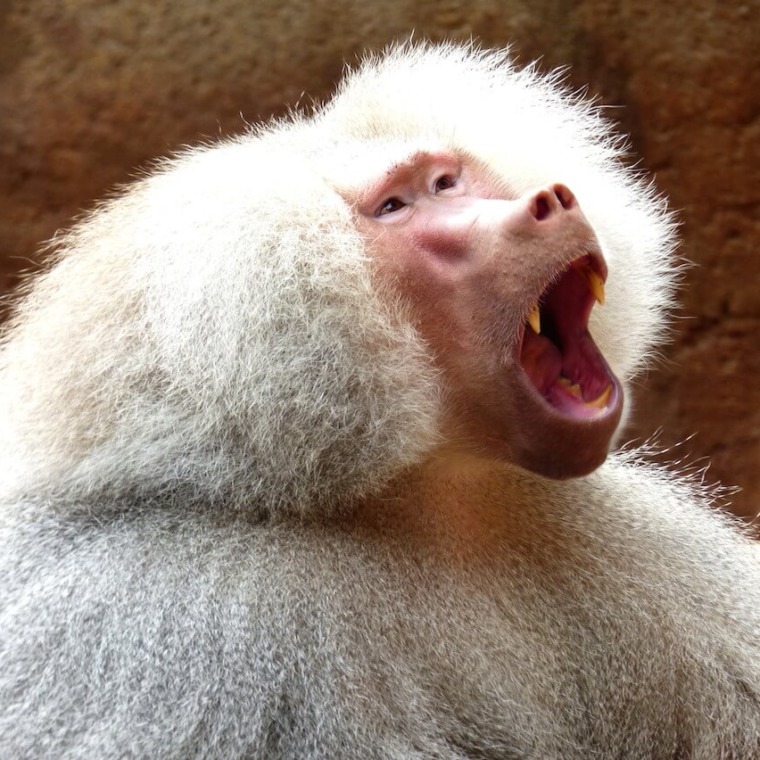
Sacred Baboons are common throughout northeastern Africa, but are extinct in the Nile region and Egypt, where they originally received their name and were worshiped by the ancient Egyptians.
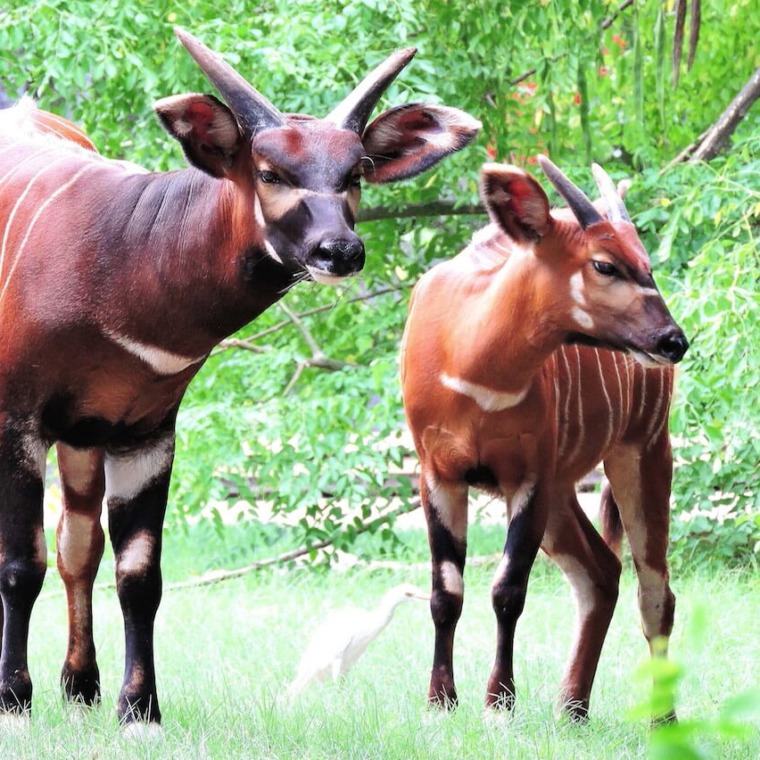
Bongo are most active at dawn and dusk, and often forage near the edges of wooded areas. They normally shy in the wild and flee into the forest for cover at the slightest provocation.
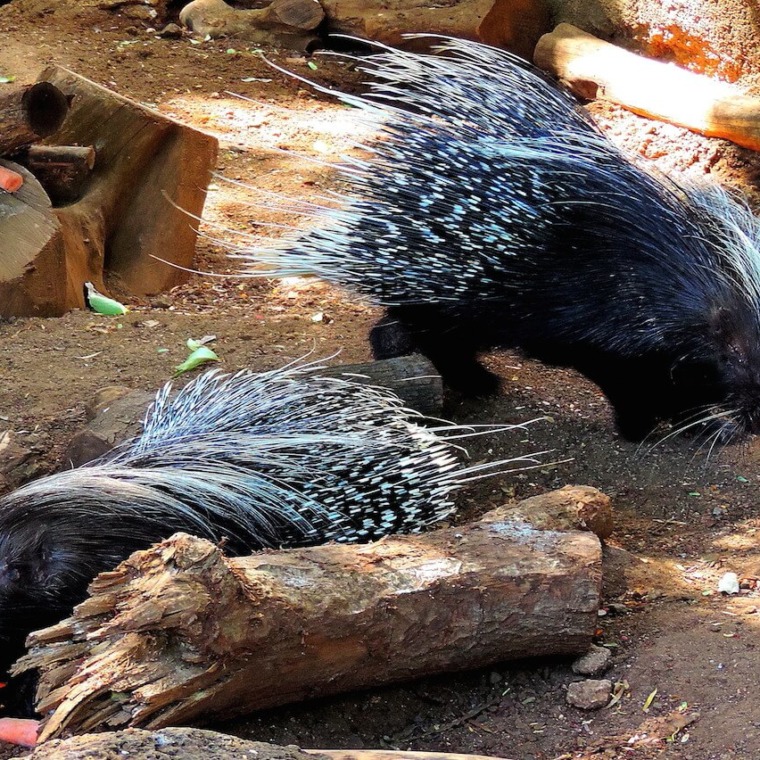
The North African crested porcupine is nocturnal. They are very adaptable and can be found in forests, on plantations, in rocky or mountainous areas as well as in deserts.
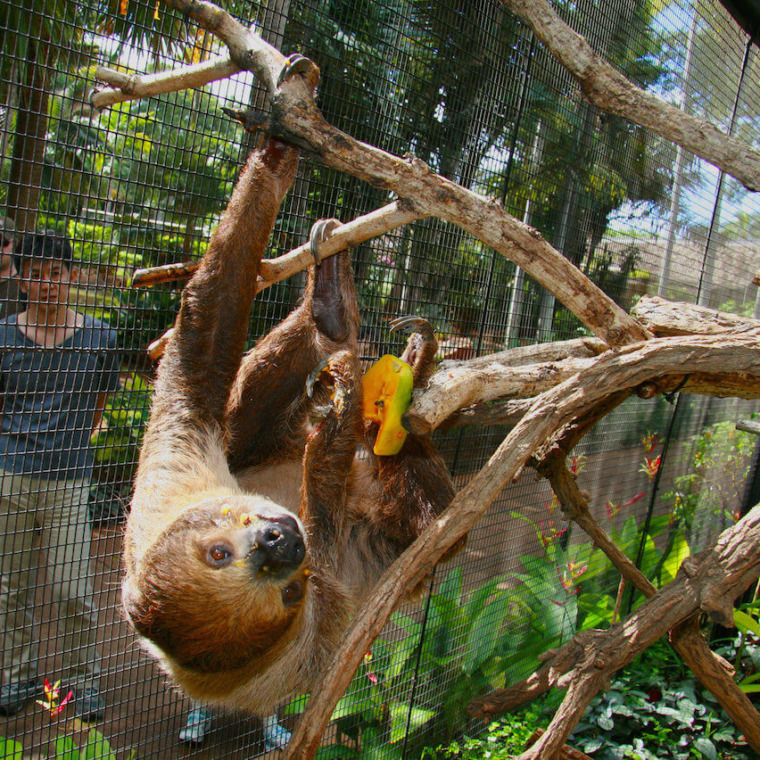
Sloths are found in Central and South America in the rain forest canopy. The Linne’s two-toed sloth is found in such countries as Nicaragua, Columbia, Venezuela, Surinam, Guyana, French Guiana, North Central Brazil, and Northern Peru.
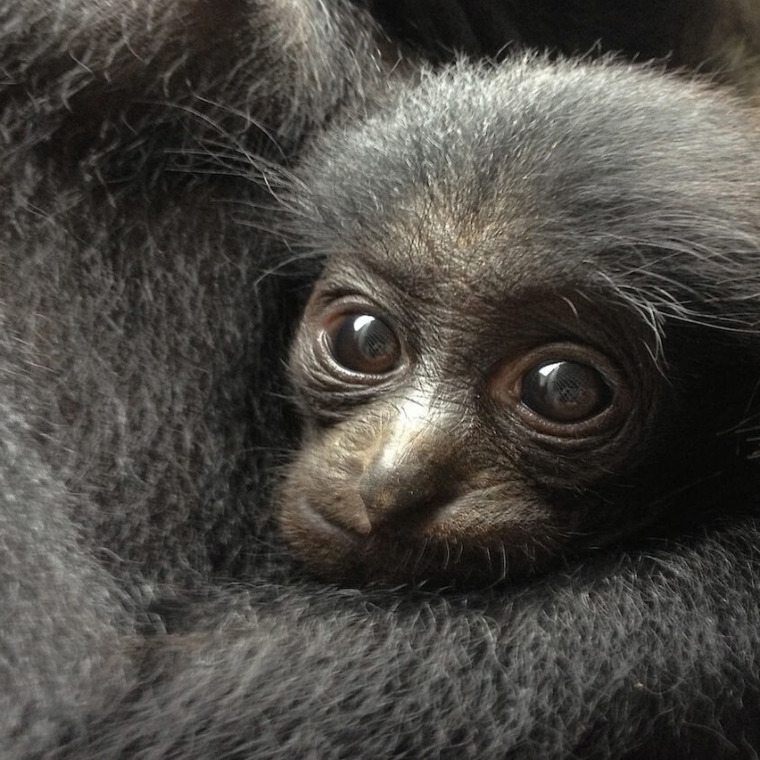
Siamangs range through southeastern Asia and are found in some numbers in the Malay Peninsula and Sumatra.


